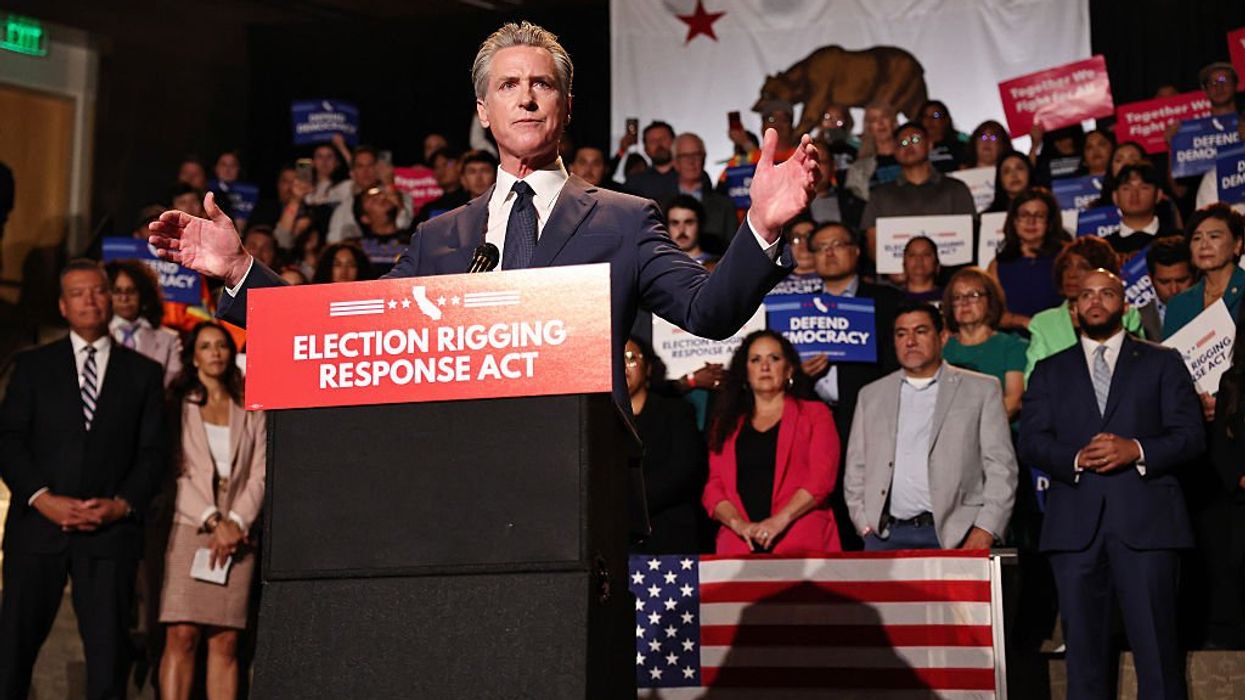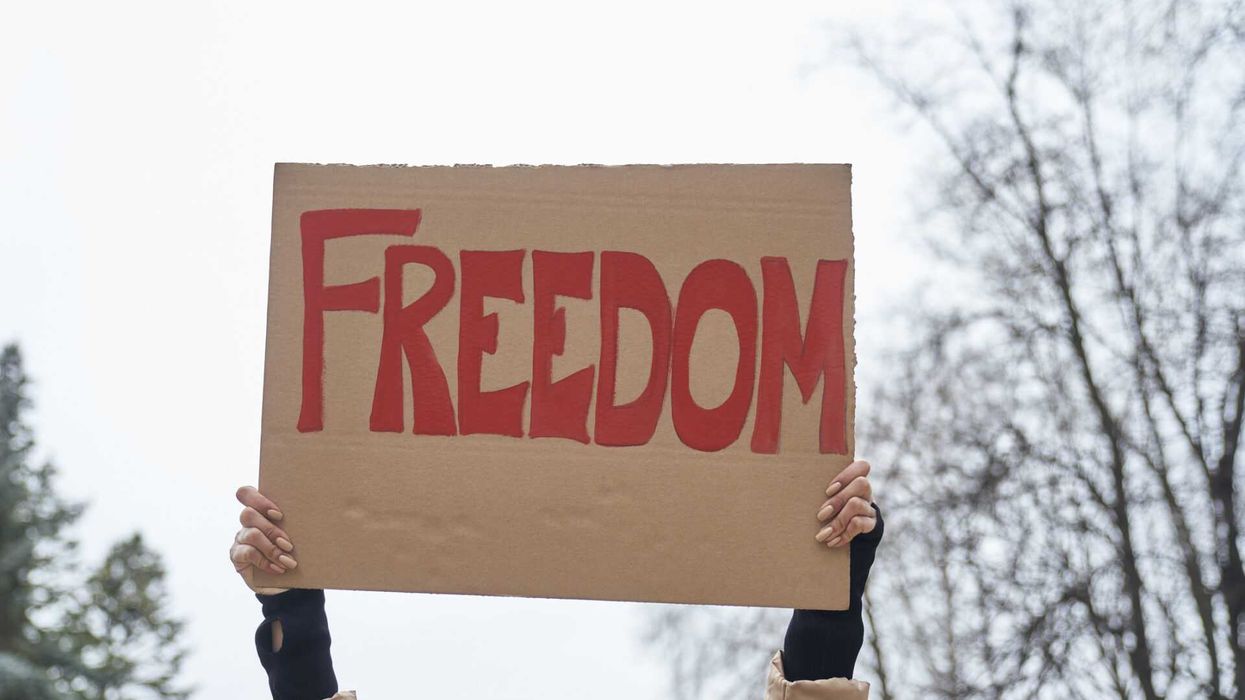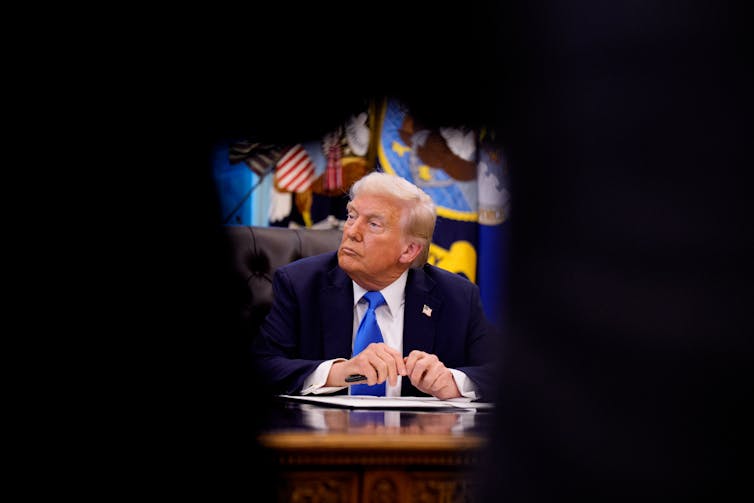The first shots in the gerrymandering wars have now been fired. Texas Republicans rammed a new gerrymandered map through the legislature, forcing police escorts on Democratic lawmakers until the power grab was complete. California Governor Gavin Newsom has fired back with his “Election Rigging Response Act”— a response that will, sadly, also involve rigging elections. The Act would sideline California’s Citizens Redistricting Commission until 2031 so Democrats can oust five Republicans from California’s congressional delegation as payback.
To be clear, the actions taken by Texas and California are not equal—one’s a brazen power grab, the other a response to that power grab. But it’s still deeply concerning that California could become the first state to backtrack from independent redistricting, just when increasing polarization makes these and other independent institutions even more essential.
These developments are forcing America to recognize that we face two urgent and overlapping crises: authoritarianism and structural collapse. A uniquely tyrannical president is attacking our democracy, and our long-flawed democratic structures are unraveling. Each crisis is amplifying and enabling the other, so both must be faced together. Trump owes his second term in part to voters who believe the system is so rigged they’re willing to see it torn down. Stopping President Trump and what he represents will depend on showing Americans a better system ahead.
The gerrymandering wars have laid bare the unique Achilles’ heel at the heart of our structural dysfunction: We give partisan institutions immense power over the rules of elections. No other peer democracy entrusts politicians with control over as many pieces of electoral machinery as the United States. Ignoring these major flaws has long left American democracy susceptible to authoritarian capture, and now the bill is coming due.
The consequences are as predictable as they are catastrophic. Party control over election districts now denies our democracy the lifeblood of competition, accountability, and choice. Why try to persuade voters when it’s easier to gerrymander them into irrelevance? Why advance policies that the majority will support when so many rules allow insiders to ignore the majority and stay in power?
For decades, America relied on strong norms, (relatively) responsible leaders, and a political culture of forbearance to keep the ship of state steady despite these cracks in the hull. But now toxic polarization is tearing these cracks wider apart.
While partisan gerrymandering is an obvious example of the problem with giving politicians control over the rules of their own election, the structural problems go much deeper. One hidden cause of the current crisis is rising partisan manipulation of ballot measures, which has contributed significantly to the redistricting arms race over the past decade.
In three red states (Ohio, Missouri, and Utah), majorities backed strong, citizen-led anti-gerrymandering measures. But, in all three states, either Republican legislatures overrode the approved initiative, or Republican officials manipulated the ballot-measure process to deny the will of the voters. Had those voters’ wishes been respected, the constraints on gerrymandering facing blue and red states would be more closely balanced, the risk of an arms race would be contained, and Democrats would not be threatening to unwind two decades’ worth of progress toward fairer maps.
The Ohio example is particularly ugly. Blatantly misleading ballot language, written at the behest of Republican Ohio Secretary of State Frank LaRose, told voters that the state’s independent redistricting initiative would establish a new taxpayer-funded commission “required to gerrymander.” Opposition messaging echoed this disinformation, claiming that a “No” vote would “stop gerrymandering.” In the end, the measure narrowly lost despite polls showing widespread support for the policy of independent redistricting.
In two other red states, Arkansas and Oklahoma, procedural hurdles of questionable merit kept independent redistricting commission ballot measures from ever reaching voters.
These disturbing power plays reflect the wider structural collapse of checks and balances, but they also highlight that large majorities of voters on both sides want fairness and accountability. This broadly shared desire to unrig the system is essential to stopping authoritarianism and building a more resilient democracy.
Ahead of 2026, two immediate steps are necessary: (1) the redistricting contagion must be stopped from spreading, and (2) ballot measure protections must be strengthened—and fast.
Stopping the contagion may require a voter referendum to block worse maps in Ohio and litigation to block worse maps in Florida and Indiana. (In these and other states targeted by Trump, laws provide for more defensive moves than in Texas.) It may require Democrats to join those Republicans in Congress who have introduced a mid-decade redistricting ban. And yes, it will mean mobilizing enough popular support so that anti-gerrymandering candidates can win the House in 2026—focusing in particular on those districts where gerrymandering efforts might overreach and give voters a chance to fight back.
Strengthening ballot measure protections is equally urgent. Voters in both red and blue states want to stop gerrymandering, and reforms must be won and defended in both red and blue states. If efforts to end gerrymandering are to continue making progress, then mutual disarmament will be necessary—and that will require “fixing the process first” in 2026 to 2028 to unlock the possibility of passing new redistricting reforms in 2028 to 2030.
On this front, Missouri and Utah are showing the way forward. In Missouri, a broad-based coalition is advancing an initiative that will make it harder for the legislature to repeal approved measures and for the secretary of state to mislead voters. And in Utah, reformers recently achieved a big win when a state court ruled the legislature unconstitutionally overturned a voter-approved measure establishing a ban on gerrymandering and an advisory redistricting commission. These kinds of efforts can enable successful redistricting reform and provide other benefits for our democracy over the long run—and they deserve to be an immediate priority for reformers across the 23 states with citizen initiatives.
Ahead of 2028 and 2030, reformers will also need to gather, work together, and pioneer new ways to (1) constrain partisan gerrymandering and (2) reduce the risk that partisan interference plays across the election landscape.
On the gerrymandering front, reformers could use multi-state agreements to ensure that state-by-state progress does not unintentionally skew representation in Congress or cause one party to unilaterally disarm. Such multi-state approaches can ensure a balanced way forward for new independent commissions as well as opportunities for other reforms that would combat gerrymandering, such as voting systems based on multi-member districts. Our organization—Election Reformers Network—works with reformers and policymakers on this full range of policy options, all of which would move us closer to the ultimate goal: a federal solution to end the gerrymandering wars for good.
On the partisan interference front, voters are starting to see why giving politicians control over so many other parts of our elections poses major risks as well. From party control over the certification of election results to blatant favoritism by secretaries of state, our country’s antiquated systems are buckling under the stresses of polarization. Good models exist to tackle these problems, and we can no longer afford to leave these vulnerabilities open to abuse.
These are the hidden causes and higher stakes of the gerrymandering crisis. To meet this bigger challenge, we need “anti-hardball”: implementing forceful but principled responses like those described above that “reduce the likelihood of constitutional hardball being played by either side.” Otherwise, we might look back on 2026 as the year that our democracy slipped away—not because of the seats that switched hands, but because it was the year we all gave up and gave in.
If we want to save democracy for ourselves and our children, we must demand more—we must fight for something better. And with the Voting Rights Act under threat and the 2030 census around the corner, this cause could not be more urgent.
Michael Parsons and Kevin Johnson are Senior Counsel and Executive Director of Election Reformers Network, a nonpartisan nonprofit dedicated to protecting elections against polarization.




















